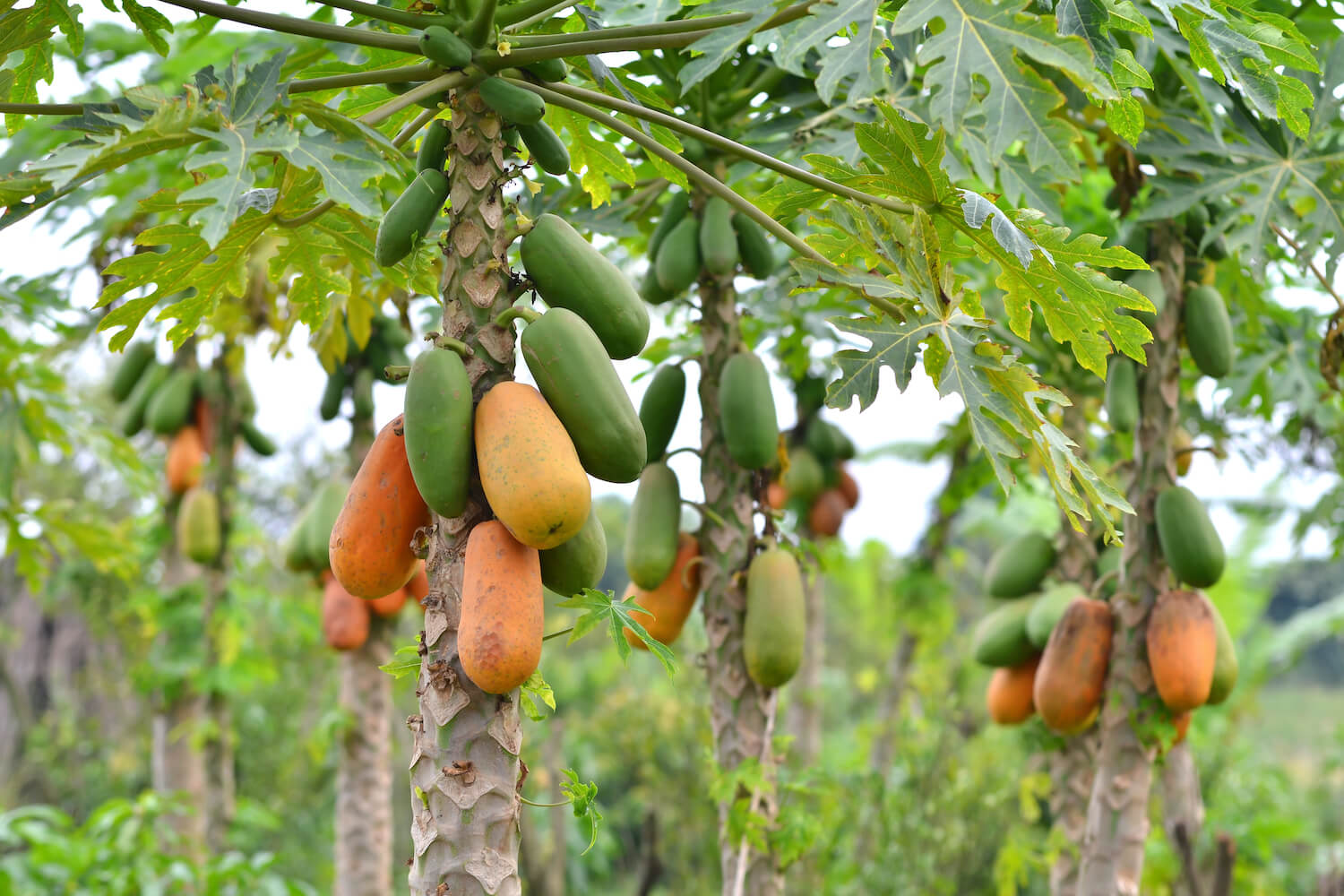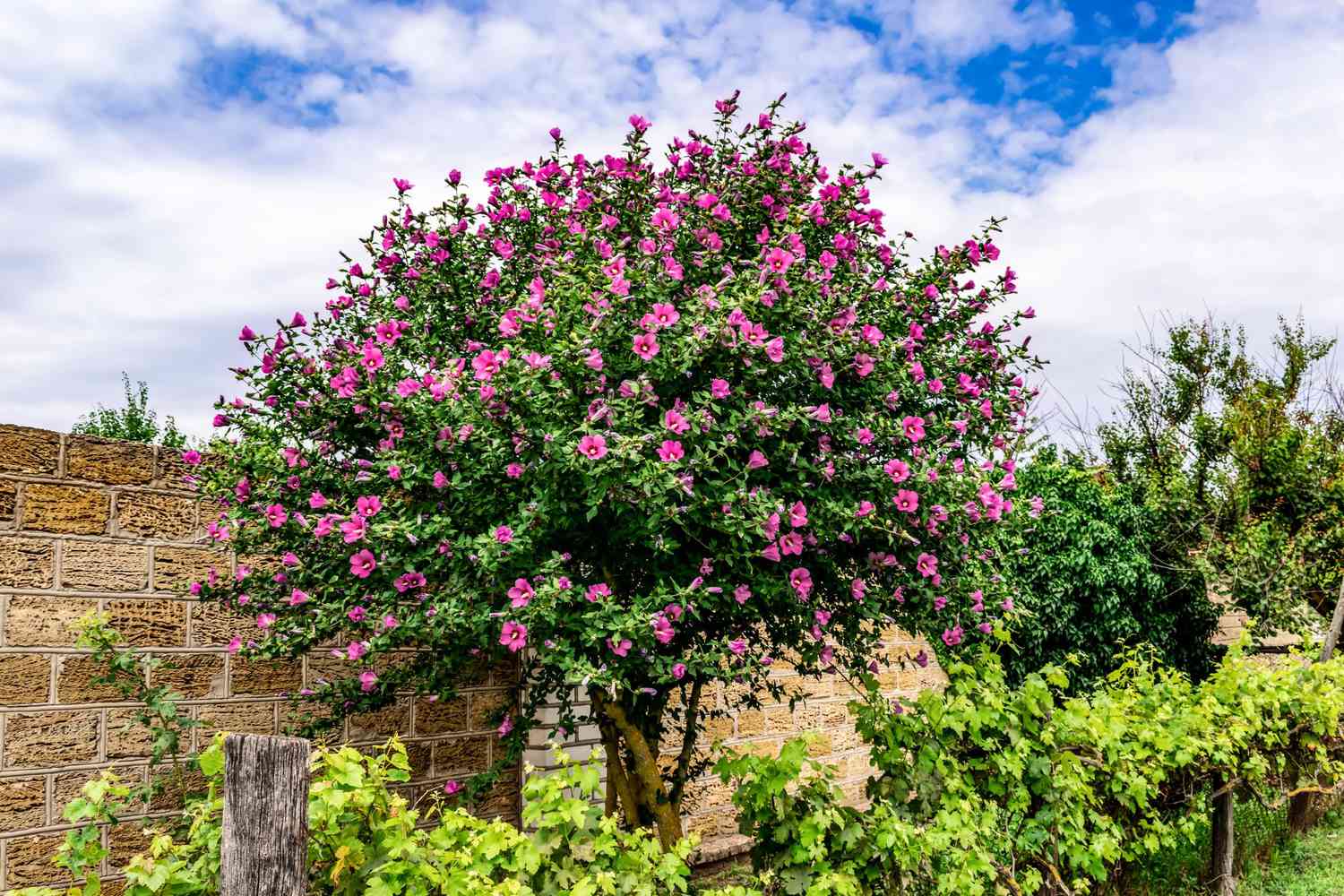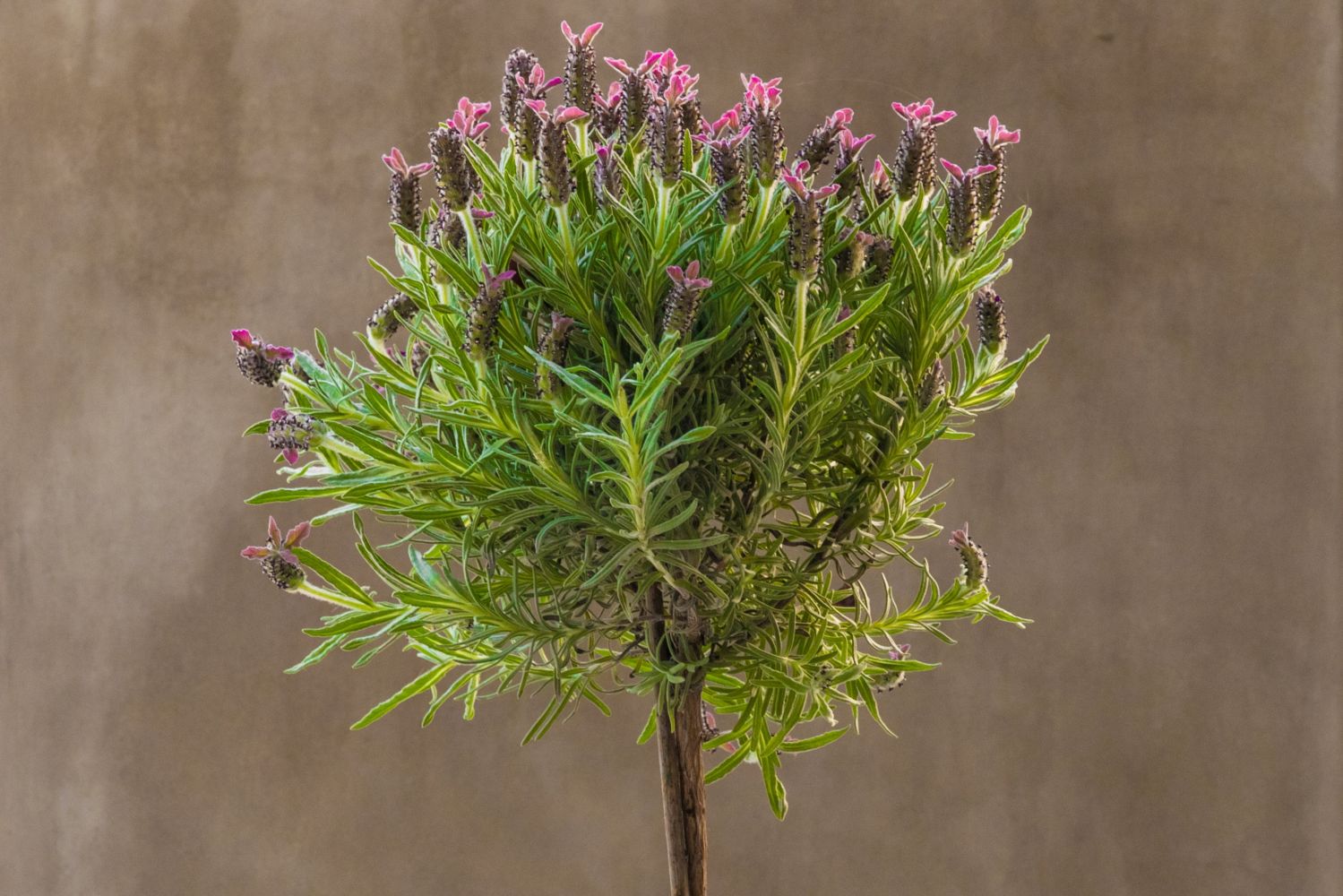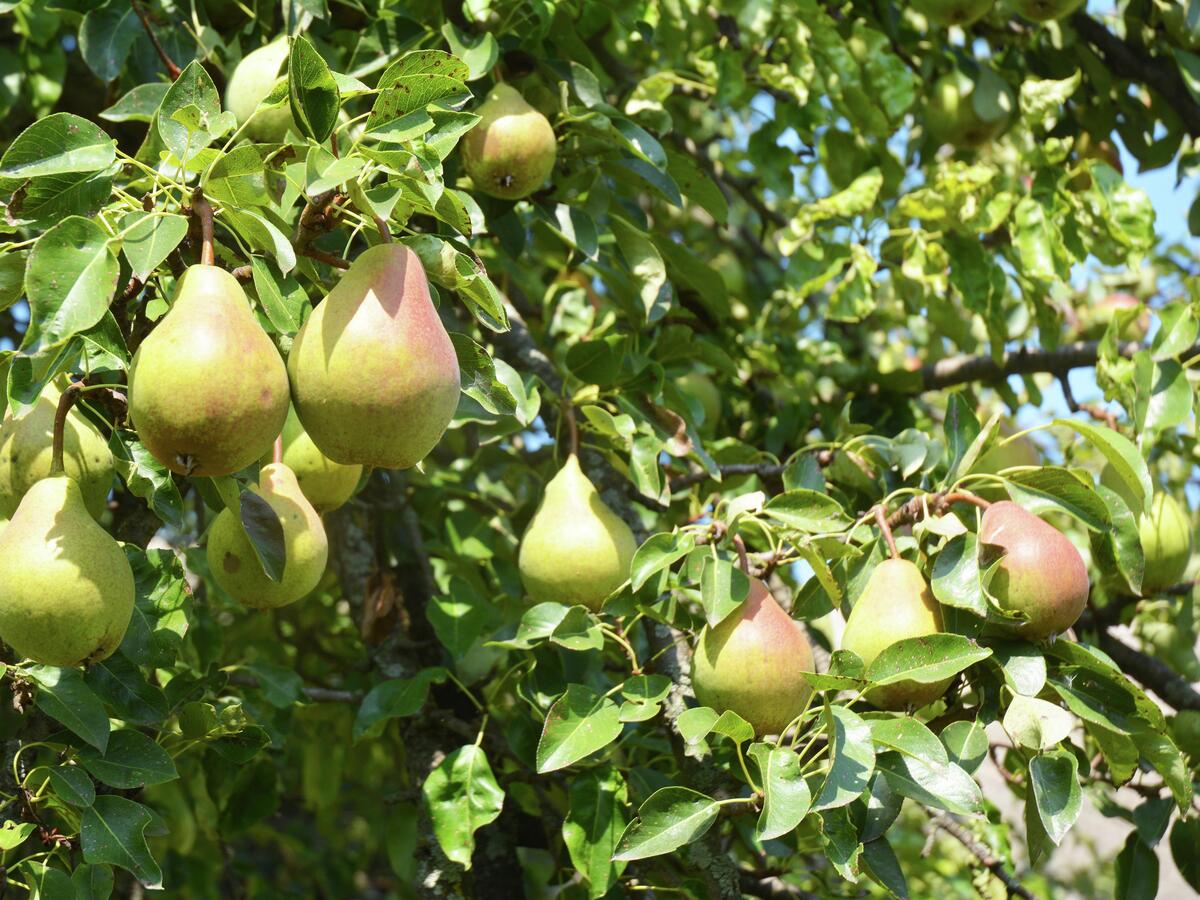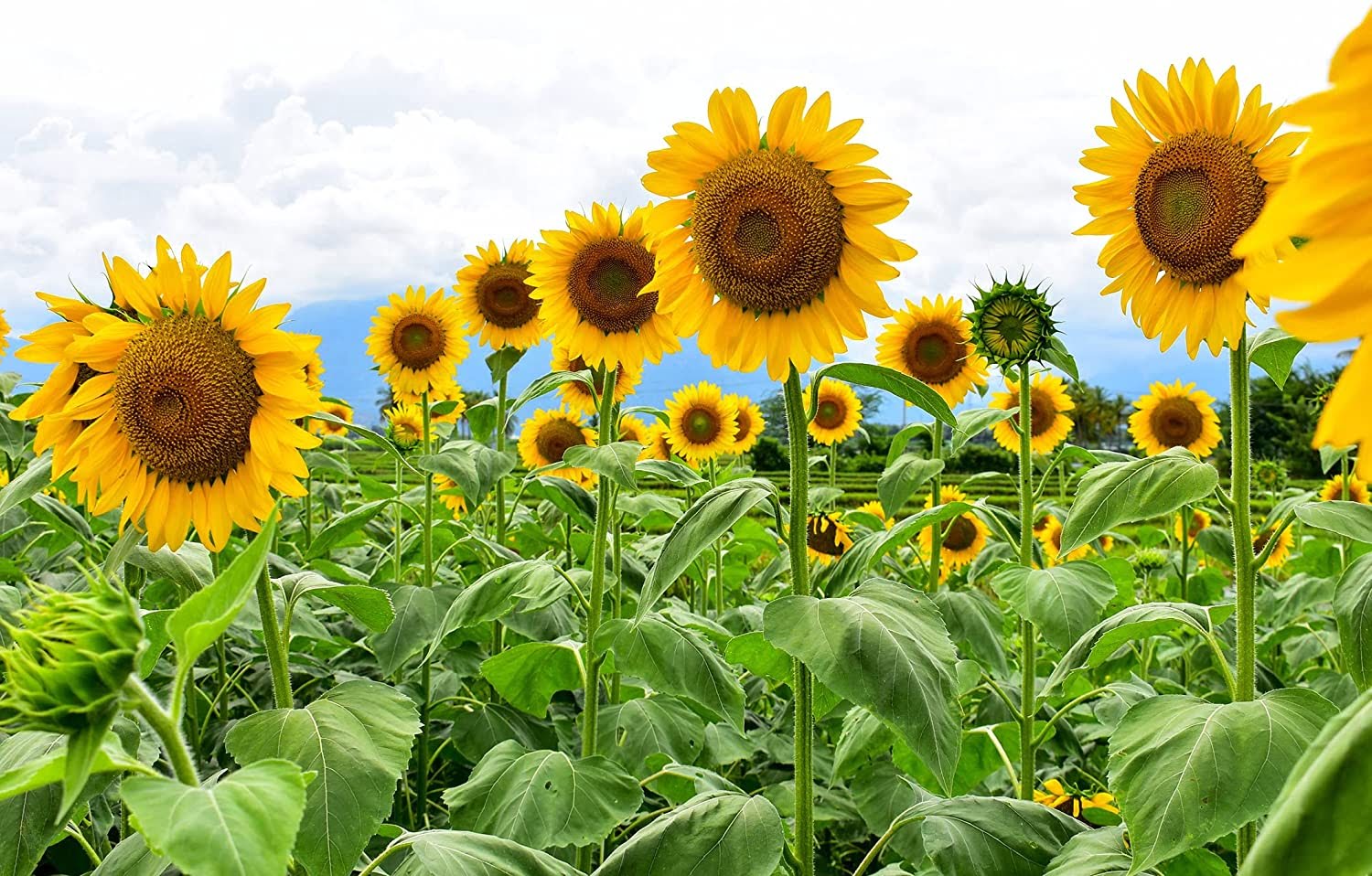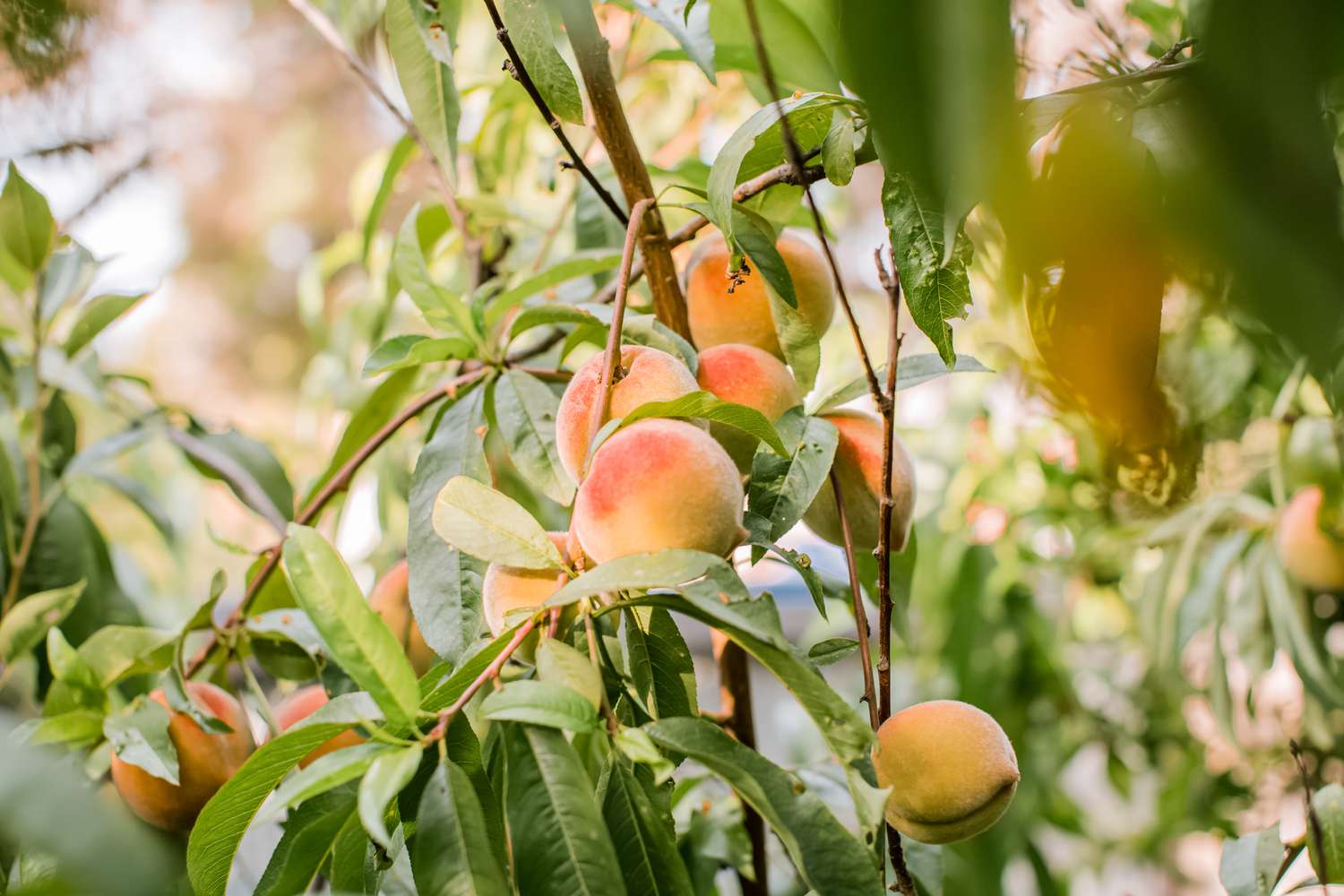Home>Gardening Techniques>Plant Care>How Big Do Peach Trees Get
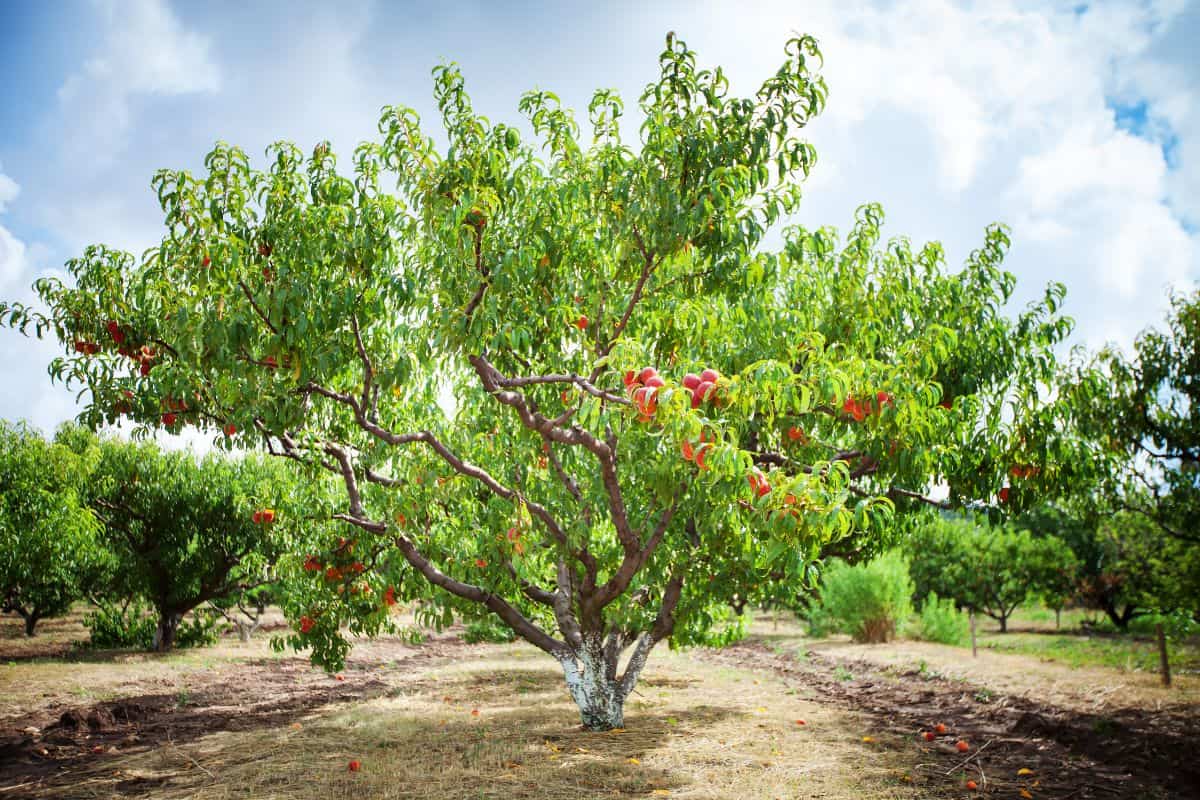

Plant Care
How Big Do Peach Trees Get
Published: October 24, 2023
Learn about the ideal plant care for peach trees and find out how big they can grow. Ensure your peach tree thrives with proper care and maintenance.
(Many of the links in this article redirect to a specific reviewed product. Your purchase of these products through affiliate links helps to generate commission for Chicagolandgardening.com, at no extra cost. Learn more)
Table of Contents
Introduction
Peach trees are beautiful and rewarding additions to any garden or orchard. Not only do they provide delicious fruit, but they also add visual appeal with their lovely blossoms in the spring. However, before planting peach trees, it’s important to have an understanding of how big they can get.
The size of a peach tree can vary depending on various factors, including the variety, environmental conditions, and pruning techniques. Some peach trees can remain small and compact, while others can grow into towering giants.
In this article, we will explore the factors that can affect the size of peach trees and discuss the different varieties available, including dwarf and standard options. We will also delve into the maximum height and spread of peach trees and provide tips on pruning and managing their growth.
Whether you have limited space or a vast garden, understanding the growth potential of peach trees will help you make informed decisions about selecting the right variety and managing their size to fit your landscape.
So, if you’re ready to dive into the fascinating world of peach tree sizes and learn how to care for these delightful trees, let’s get started!
Factors Affecting the Size of Peach Trees
The size of a peach tree can be influenced by several factors, including:
- Rootstock: The rootstock onto which the peach tree is grafted plays a significant role in determining its ultimate size. Different rootstocks have varying growth characteristics, such as vigor and size control. Certain rootstocks are known for producing smaller, more manageable trees, while others can lead to larger, more vigorous growth.
- Variety: The specific variety of peach tree also has an impact on its size. Some varieties naturally tend to be more compact and have slower growth rates, while others are known for their larger, more vigorous growth.
- Environmental Conditions: The environmental factors in which a peach tree grows can affect its size. Adequate sunlight, soil conditions, and water availability are crucial for optimal growth. Peach trees that receive full sun exposure and are planted in well-draining soil tend to grow more vigorously compared to those in shaded or waterlogged areas.
- Pruning: Proper pruning techniques and timing can control the size of a peach tree. Pruning helps maintain the tree’s shape, open up the canopy for better air circulation, and improve fruit production. Regular pruning reduces the overall size of the tree and directs its growth in a desired manner.
- Fertilization: The amount and type of fertilizer applied to peach trees can impact their growth. Too much nitrogen-rich fertilizer can result in excessive vegetative growth, leading to larger tree size. It is important to follow the recommended fertilization guidelines to promote balanced growth.
Understanding these factors and how they interact can help you manage the size of your peach trees effectively. By selecting the right variety, controlling the environmental conditions, implementing proper pruning techniques, and providing appropriate fertilization, you can influence the size of your peach trees to suit your needs and preferences.
Next, we will explore the different varieties of peach trees, including dwarf and standard options, which offer further flexibility in managing tree size and growth.
Dwarf Varieties of Peach Trees
If you have limited space or prefer to have smaller peach trees, dwarf varieties are an excellent option to consider. These trees are specifically bred to have smaller sizes while still producing delicious fruit.
Dwarf peach trees typically reach a height of around 6 to 8 feet (1.8 to 2.4 meters) and have a spread of about 4 to 6 feet (1.2 to 1.8 meters). They are ideal for small gardens, patios, or even container gardening.
Here are a few popular dwarf varieties of peach trees:
- Bonanza: Bonanza is a compact peach tree that reaches a height of about 6 to 7 feet (1.8 to 2.1 meters) and produces delicious yellow-fleshed peaches. It is known for its cold hardiness and is a great choice for regions with cooler climates.
- Pix Zee: Pix Zee is a miniature peach tree that stays incredibly compact, usually growing to a maximum height of only 4 to 5 feet (1.2 to 1.5 meters). It produces sweet and juicy peaches that are perfect for snacking.
- Honey Babe: Honey Babe is another dwarf peach tree variety that grows to a height of 6 to 8 feet (1.8 to 2.4 meters). It is favored for its excellent cold hardiness and produces juicy, yellow-fleshed peaches.
These dwarf varieties not only offer the advantage of smaller sizes but also tend to have a faster fruiting period compared to standard peach trees. This means you can enjoy fresh peaches in a shorter amount of time.
When growing dwarf peach trees, it’s important to provide them with well-draining soil, full sun exposure, and regular watering. Additionally, proper pruning techniques should be applied to maintain their compact shape and encourage fruit production.
Now that we’ve explored dwarf varieties, let’s move on to discussing standard varieties of peach trees and their growth potential.
Standard Varieties of Peach Trees
Standard varieties of peach trees are known for their larger size and more vigorous growth compared to dwarf varieties. These trees can reach varying heights and spreads, depending on the specific variety and environmental conditions.
Here are a few popular standard varieties of peach trees:
- Elberta: Elberta peach trees are one of the most widely grown varieties and can reach a height of 12 to 15 feet (3.6 to 4.5 meters) with a spread of 10 to 12 feet (3 to 3.6 meters). They produce large, juicy peaches with a sweet and tart flavor.
- Redhaven: Redhaven peach trees typically grow to a height of 10 to 12 feet (3 to 3.6 meters) with a similar spread. They are known for their excellent flavor and are considered one of the best varieties for eating fresh.
- June Gold: June Gold peach trees have a more compact habit compared to other standard varieties, reaching a height of around 8 to 10 feet (2.4 to 3 meters). They are early-season peaches with a yellow flesh and sweet flavor.
It’s important to note that the size of standard peach trees can be influenced by factors such as rootstock, pruning techniques, and environmental conditions. Regular pruning helps maintain the tree’s size and shape while promoting better fruit production.
When choosing standard varieties, consider the available space in your garden or orchard, as well as the need for proper sunlight and drainage. These trees generally require more space to grow and thrive compared to dwarf varieties.
Now that we’ve discussed both dwarf and standard varieties of peach trees, let’s explore the maximum height and spread that peach trees can reach in the next section.
Maximum Height and Spread of Peach Trees
Peach trees can vary in size depending on the specific variety, environmental conditions, and management practices. While dwarf varieties generally stay smaller, standard varieties have the potential to grow larger.
Standard peach trees can reach a height of 12 to 15 feet (3.6 to 4.5 meters) on average, with some varieties occasionally exceeding these measurements. The spread, or width, of a standard peach tree can range from 10 to 12 feet (3 to 3.6 meters), providing a canopy that offers shade and fruit-bearing branches.
It’s important to note that these are average measurements, and individual peach trees can exhibit slightly different growth patterns. Factors such as rootstock, pruning techniques, and environmental conditions can influence the ultimate size of the tree.
On the other hand, dwarf peach trees are specifically bred to remain compact and smaller in size. These trees reach an average height of 6 to 8 feet (1.8 to 2.4 meters) and have a narrower spread of 4 to 6 feet (1.2 to 1.8 meters). These dimensions make them more suitable for smaller spaces such as patios or container gardening.
Pruning plays a significant role in managing the size and shape of peach trees, regardless of whether they are standard or dwarf varieties. Regular pruning helps maintain a manageable size, encourages proper airflow through the canopy, and promotes healthy fruit production.
It’s worth mentioning that even though peach trees have the potential to grow to a certain size, their growth can be effectively controlled through proper trimming and pruning techniques. By regularly pruning and shaping your peach trees, you can ensure they fit well within your available space while still producing an abundant harvest of delicious peaches.
In the next section, we will dive into the different pruning techniques that can be utilized to control the size and shape of peach trees.
Pruning Techniques for Controlling Size
Pruning is an essential practice for controlling the size and shape of peach trees. By implementing proper pruning techniques, you can effectively manage the growth of your trees and ensure they fit within your desired space.
Here are some pruning tips to help control the size of your peach trees:
- Annual Pruning: Perform annual pruning during the dormant season, which is typically in late winter or early spring before new growth begins. This is the best time to remove dead, damaged, or diseased branches, as well as any unwanted or overcrowded growth.
- Head-Heading Technique: To control the overall height of the tree, use the head-heading technique during the dormant season. This involves cutting back the central leader by one-third to one-half of its length. This technique helps stimulate lateral branching and keeps the tree more compact.
- Thin Out Branches: Thin out excess branches to ensure good airflow and sunlight penetration throughout the tree’s canopy. This helps prevent diseases and promotes better fruit development. Remove branches that are crossing, rubbing, or growing towards the center of the tree.
- Renewal Pruning: Every few years, implement renewal pruning to rejuvenate the tree. This involves removing older wood or entire branches, promoting the growth of new, more manageable branches. Renewal pruning helps maintain the desirable size and shape of the tree over time.
- Prune to Open Center Shape: Peach trees are often trained to an open center shape, meaning the central leader is removed, and the branches are trained to grow outwards in a bowl-like shape. This open center shape allows for better light penetration and airflow and facilitates easier harvesting.
Remember, it’s essential to use clean, sharp pruning tools to make clean cuts and minimize the risk of disease transmission. Take care not to prune excessively, as this can lead to reduced fruit production. Aim for a balanced pruning approach that maintains the health and size of your peach trees.
By following these pruning techniques and maintaining regular pruning schedules, you can effectively control the size and shape of your peach trees, ensuring they fit harmoniously within your garden or orchard space.
In the next section, we will provide additional tips for managing the growth of peach trees while maximizing fruit production.
Tips for Managing the Growth of Peach Trees
Managing the growth of peach trees involves more than just pruning. Here are some additional tips to help you effectively control their growth while maximizing fruit production:
- Choose the Right Variety: Select peach tree varieties that are naturally suited to your climate and growing conditions. By choosing the right variety, you can ensure that the tree will grow optimally without excessive vigor.
- Monitor Watering: Provide consistent and adequate watering, especially during dry periods. Peach trees require regular moisture to thrive, but avoid overwatering, as it can lead to excessive vegetative growth.
- Implement Proper Fertilization: Follow recommended fertilization guidelines for peach trees to provide them with the nutrients they need for healthy growth. Avoid excessive nitrogen, as it can promote excessive foliage growth at the expense of fruiting.
- Monitor Pest and Disease Control: Keep a close eye on your peach trees for any signs of pests or diseases. Promptly address any issues through organic or integrated pest management methods to prevent stress on the trees, which can lead to excessive growth or reduced fruit production.
- Thinning Fruit: When the tree produces a heavy crop, thinning the fruit can help reduce the load on the branches and prevent them from becoming overburdened. This promotes better fruit quality and reduces the risk of branch breakage.
- Monitor Sunlight Exposure: Ensure that your peach trees receive adequate sunlight, as this is crucial for promoting proper growth and fruit development. Prune nearby trees or foliage that may be shading your peach trees to maximize sunlight exposure.
- Regularly Inspect and Maintain: Regularly inspect your peach trees for any signs of damage, disease, or weeds. Remove any dead or diseased wood promptly and keep the area around the base of the tree free from weeds to prevent competition for nutrients and water.
By implementing these tips, you can effectively manage the growth of your peach trees and ensure optimal fruit production. Remember to maintain a balance between growth control and providing the necessary conditions for their health and productivity.
Now that you have a better understanding of managing the growth of peach trees, let’s conclude with a summary of the key points discussed throughout this article.
Conclusion
Peach trees are a wonderful addition to any garden or orchard, providing not only delicious fruit but also beautiful blossoms. Understanding the factors that influence their size and implementing proper management techniques are key to successfully growing and maintaining these trees.
We explored the different factors that affect the size of peach trees, including rootstock, variety, environmental conditions, pruning, and fertilization. These factors work together to determine the ultimate height and spread of the tree.
Dwarf varieties of peach trees are an excellent option for those with limited space or who prefer smaller trees. They generally reach heights of around 6 to 8 feet, making them suitable for small gardens or container gardening.
Standard peach trees, on the other hand, can grow taller, reaching heights of 12 to 15 feet or more. These trees require more space but can offer larger fruit yields.
Proper pruning techniques play a crucial role in controlling the size and shape of peach trees. Annual pruning, thinning out branches, and renewal pruning help maintain the desired size while promoting better airflow, sunlight penetration, and fruit production.
In addition to pruning, effective management of peach tree growth involves selecting the right variety, monitoring watering and fertilization, controlling pests and diseases, thinning fruit, and ensuring adequate sunlight exposure.
By following these tips and techniques, you can successfully manage the growth of your peach trees, ensuring they fit within your available space while maximizing fruit production.
So, whether you have a small patio or a vast orchard, you can enjoy the beauty and bounty of peach trees by understanding their growth potential and taking appropriate steps to manage their size. Happy growing!
